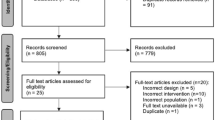Abstract
Background
Acetaminophen (APAP) is used in neurocritical care (NCC) patients for analgesia without sedation or antiplatelet activity. Research suggests that intravenous (IV) APAP produces earlier and higher serum levels compared to oral (PO) APAP. This retrospective study evaluates the associated analgesic effects of IV and PO APAP and use of adjunctive opioids in NCC patients with moderate-severe pain.
Methods
Patients admitted to the neuroscience intensive care unit (NSICU) between May 2012 and April 2013 who received ≥1 dose of IV APAP were included in the study. IV and PO APAP doses administered with a predose pain score ≥4 within 1 h of dosing were compared. Pain intensity difference (PID) was calculated as the change between the pain score prior to each dose and scores at 30 min, 1, 2, 3, and 6 h postdose. Pre- and postdose morphine milligram equivalents (MME) were also calculated.
Results
309 NSICU patients received 459 doses of IV and 440 doses of PO APAP meeting our inclusion criteria. The PID at 30 min postdosing was significantly higher among those receiving IV APAP compared to those receiving PO APAP (p = 0.003). No significant difference in PID was seen at 1, 2, 3, and 6 h; and there was no significant difference in pre- or postdose MME between the two groups.
Conclusion
IV APAP was more effective than PO APAP at relieving pain within 30 min of dosing, but this difference was not sustained over 6 h. Further studies are needed to assess the benefits of this rapid onset of action.



Similar content being viewed by others
References
Oderda GM, Said Q, Evans RS, et al. Opioid-related drug events in surgical hospitalizations: impact on costs and length of stay. Ann Pharmacother. 2007;41(3):400–6.
Kehlet H, Dahl JB. The value of “multimodal” or “balanced analgesia” in postoperative pain treatment. Anesth Analg. 1993;77(5):1048–56.
Schutz RA, Fong L, Chang Y, Royal MA. Open-label, 4-period, randomized crossover study to determine the comparative pharmacokinetics of oral and intravenous acetaminophen administration in healthy male volunteers. Poster presented at: 32nd Annual Meeting and Workshops American Society of Regional Anesthesia and Pain; April 19–22 2007;Vanc. BC.
Singla NK, Parulan C, Samson R, et al. Plasma and cerebrospinal fluid pharmacokinetic parameters after single-dose administration of intravenous, oral or rectal acetaminophen. Pain Pract. 2012;12:523–32.
Petring OU, Dawson PJ, Samson R, Blake DW, et al. Normal postoperative gastric emptying after orthopaedic surgery with spinal anaesthesia and i.m. ketorolac as the first postoperative analgesic. Br J Anaes. 1995;74(3):257–60.
Berger MM, et al. Intestinal absorption in patients after cardiac surgery. Crit Care Med. 2000;28(7):2217–23.
Sinatra RS, Jahr JS, Reynolds L, et al. Efficacy and safety of single and repeated administration of 1 gram intravenous acetaminophen injection for pain management after major orthopedic surgery. Anesthesiology. 2005;102:822–31.
Quade D. Rank analysis of covariance. J of the American Statistical Association. 1967;62:1187–900.
Cadence Pharmaceuticals (2010). Ofirmev (acetaminophen) injection. [package insert]. San Diego, CA: Cadence Pharmaceuticals.
Lexi-Comp Online, Hudson, Ohio: Lexi-Comp, Inc.; Accessed July 25, 2015. http://online.lexi.com/.
Autret E, Duterte J, Breteau M, Jonville A, Furet Y, Laugier J. Pharmcokinetics of paracetamol in the neonate and infant after administration of paracetamol chlorhydrate. Dev Pharmacol Ther. 1993;20(3–4):129–34.
Cattabriga I, Pacini D, Lamazza G, et al. Intravenous paracetamol as adjunctive treatment of postoperative pain after cardiac surgery: a double blind randomized controlled trial. Eur J Cardio-Thorac Surg. 2007;32:527–31.
Kemppainen T, Kokki H, Tuomilehto H, Seppa J, Nuutinen J. Acetaminophen is highly effective in pain treatment after endoscopic sinus surgery. Laryngoscope. 2006;16:2125–8.
Korkmaz-Dilmen O, Tunali Y, Cakmakkaya O, et al. Efficacy of intravenous paracetamol, metamizol and lornoxicam on postoperative pain and morphine consumption after lumbar disc surgery. Eur J Anaesthesiol. 2010;27:428–32.
Lahtinen P, Kokki H, Hendolin H, Hakala T, Hynynen M. Propacetamol as adjunctive treatment for postoperative pain after cardiac surgery. Anesth Analg. 2002;95:813–9.
Francis J, Young GB. Delirium (Beyond the Basics). In: Post TW, editor. UpToDate. Waltham: UpToDate; 2014. www.uptodate.com. Accessed 25 July 2015.
Remy C, Marret E, Bonnet F. Effects of acetaminophen on morphine side-effects and consumption after major surgery: a meta-analysis of randomized controlled trials. Br J Anaesth. 2005;94:505–13.
Elia N, Lysakowski C, Tramer MR, Phil D. Does multimodal analgesia with acetaminophen, nonsteroidal anti-inflammatory drugs, or selective cyclooxygenase-2 inhibitors and patient controlled analgesia morphine offer advantages over morphine alone? Anesthesiology. 2005;103(6):1296–304.
Pettersson PH, Jakobsson J, Öwall A. Intravenous acetaminophen reduced the use of opioids compared with oral administration after coronary artery bypass grafting. J Cardiothorac Vasc Anesth. 2005;19(3):306–9.
Tsang K, Page J, Mackenney P. Can intravenous paracetamol reduce opioid use in preoperative hip fracture patients? Orthopedics. 2013;36:20–4. doi:10.3928/01477447-20130122-53.
Pergolizzi J, et al. Continuous multimechanistic postoperative analgesia: a rationale for transitioning from intravenous acetaminophen and opioids to oral formulations. Pain Practice. 2011;12(2):159–73.
Chou R, Gordon DB, de Leon-Casasola OA, et al. Management of Postoperative Pain: A Clinical Practice Guideline from the American Pain Society, the American Society of Regional Anesthesia and Pain Medicine, and the American Society of Anesthesiologists’ Committee on Regional Anesthesia. Executive Commi. J Pain. 2016;17(2):131–57. doi:10.1016/j.jpain.2015.12.008.
Funding
This investigator-initiated study was funded by Mallinckrodt Pharmaceuticals.
Author information
Authors and Affiliations
Corresponding author
Ethics declarations
Conflicts of Interest
Gretchen Brophy is a consultant and speaker for Mallinckrodt Pharmaceuticals.
Rights and permissions
About this article
Cite this article
Nichols, D.C., Nadpara, P.A., Taylor, P.D. et al. Intravenous Versus Oral Acetaminophen for Pain Control in Neurocritical Care Patients. Neurocrit Care 25, 400–406 (2016). https://doi.org/10.1007/s12028-016-0289-z
Published:
Issue Date:
DOI: https://doi.org/10.1007/s12028-016-0289-z




